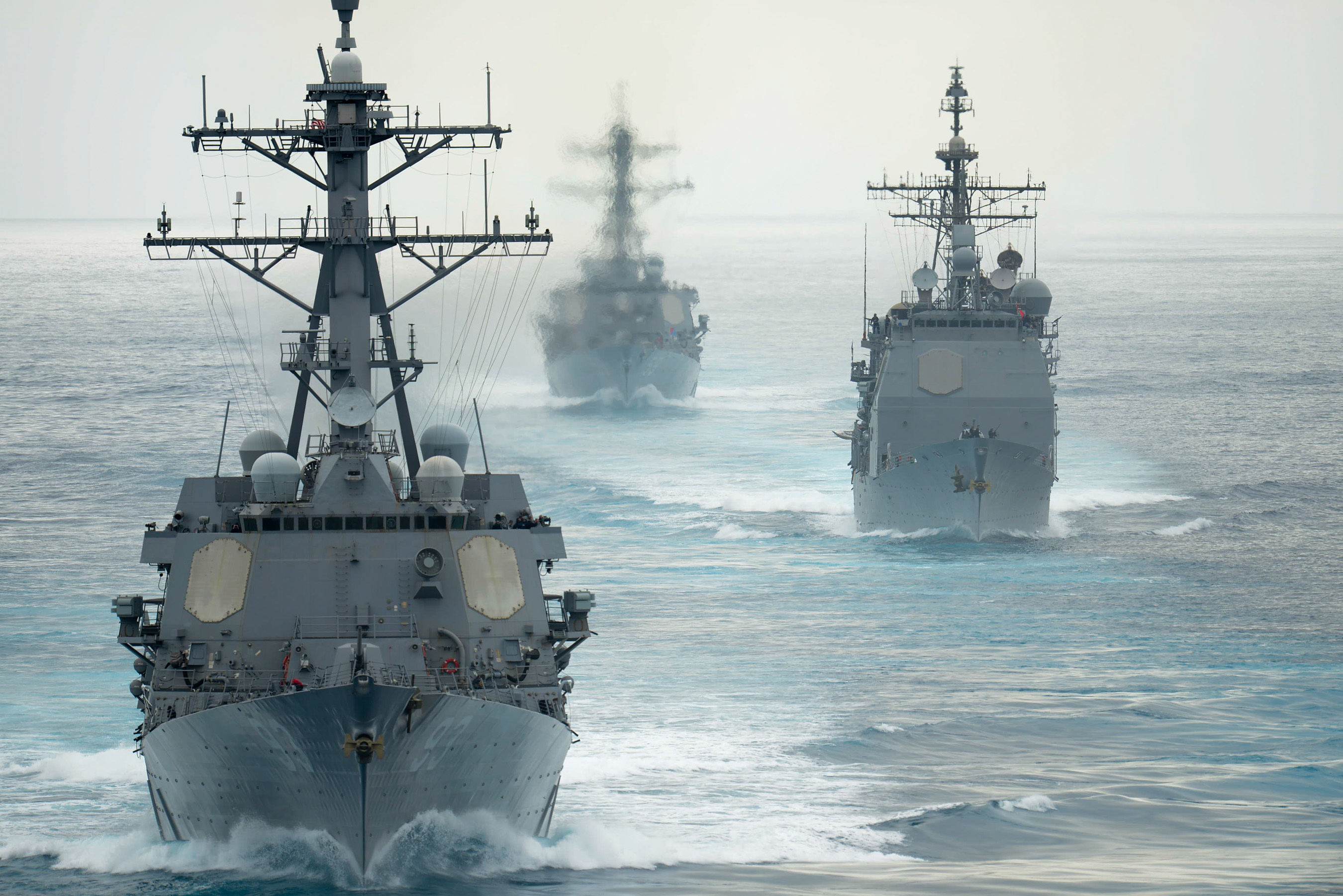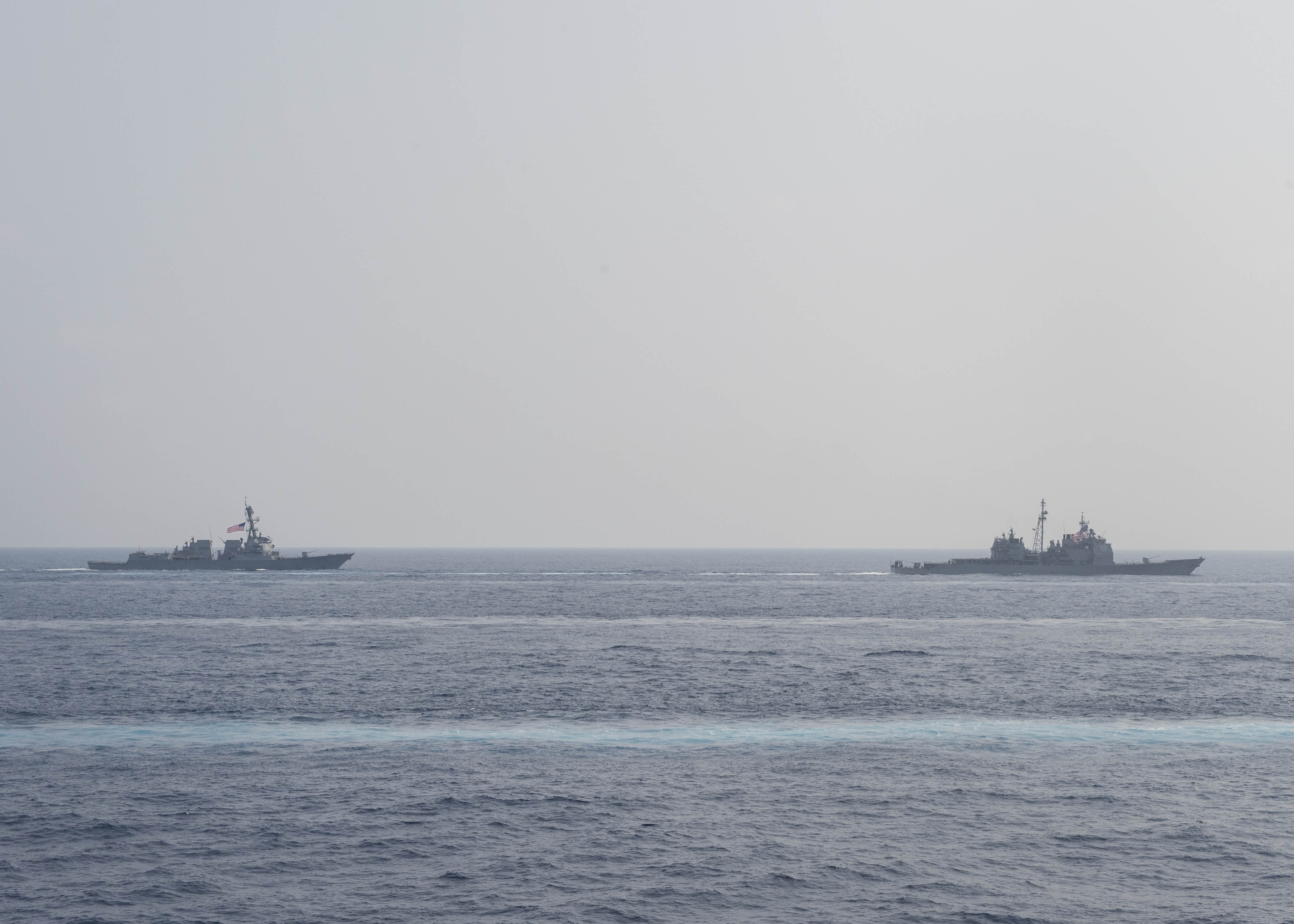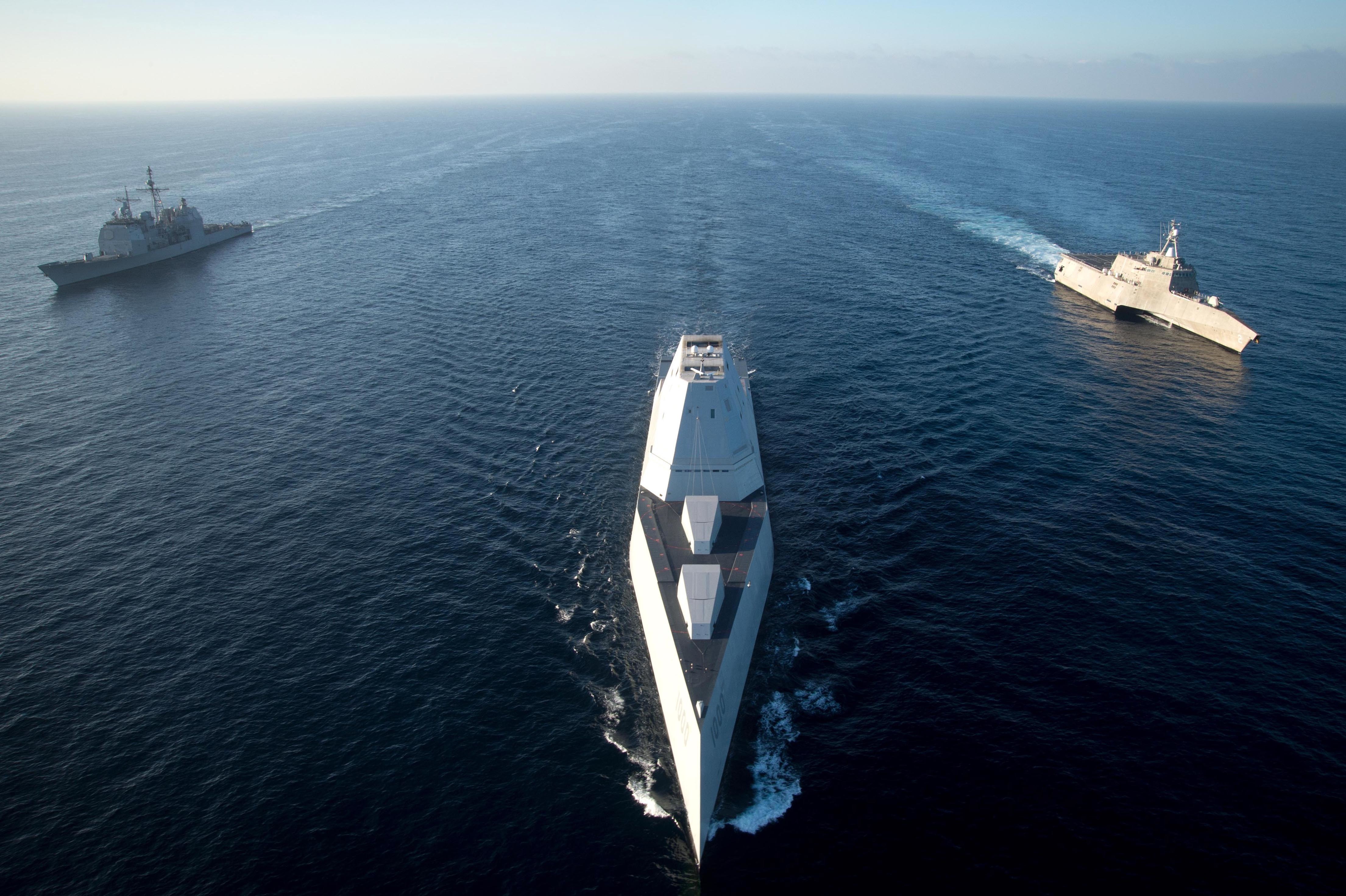
The Navy is already conducting wargames in preparation for the Future Surface Combatant family of systems acquisition process to begin later this year, several officials involved said last week.
The Future Surface Combatant – originally meant to look at how to replace cruisers, destroyers and ultimately the Littoral Combat Ship – now includes a large, small and unmanned surface combatant that will go through the acquisition process with each other and an “integrated combat system” to tie them together.
Capt. Chris Sweeney, deputy director of surface warfare for Aegis and Ballistic Missile Defense (OPNAV N96), told USNI News that “we’re not sure yet” whether the three ships would have a common hull design, and rigorous analysis and wargaming would ultimately dictate the requirements for the three – or more – surface ships.
“Do we use a current hull form, or do we go with a clean sheet and go to a new hull form? I don’t know. I think those top-level requirements need to be laid out, because then it’s all about SWAP-C, space, weight, power, cooling,” Sweeney said.
“So how big does the hull need to be? Do we need all the mission capability on one ship? We’ll see what the study says.”
A large integrated air and missile defense cruiser may have extensive warfighting capabilities whereas the small surface combatant may be limited to a lesser capability focused on self-defense, for example.
Sweeney said during a Feb. 15 panel presentation at the American Society of Naval Engineers’ Technologies, Systems and Ships conference that two capabilities-based assessments had been completed in October 2016 to look at operational and technological gaps in the fleet. Four common themes among the assessments’ findings were enhanced lethality, distribution of forces, human-machine teaming and integration of effects, he said.
Based on those assessments, as well as work leading up to the Navy’s Future Fleet Architecture study, the surface warfare community is now preparing for a big wargame in June to test out ideas for the FSC family of systems. Based on the outcome of the June wargame, officials should have a “surface force initial capabilities document” written by July to get FSC into the acquisition pipeline.
The conversation around the manned combatants may be similar to previous ones – such as when the surface community decided to replace the frigate, the patrol coastal ships (PCs) and the mine countermeasures ships (MCMs) with the single Littoral Combat Ship. The study may point to a single large surface combatant to replace both cruisers and destroyers, or a single hull design with multiple payload variants, or multiple different large surface combatants to meet fleet needs.

The unmanned piece of FSC is an even more complex conversation, though, due to the Navy admittedly having a long list of things they still need to better understand about unmanned systems and manned-unmanned integration.
Cmdr. Jason Fox, military deputy for Naval Sea Systems Command’s technology office (SEA 05T), said in a Feb. 16 panel at the same conference that the Navy needs to truly understand why it is integrating a manned and an unmanned platform before it can decide how to integrate them. If the unmanned vessel will be a sensor to extend the sight of the manned platform, the two can be more loosely integrated. However, if the unmanned vessel will be part of the fire control loop, where quality of data and speed of data transmission are paramount, that operational concept drives a much tighter integration.
“We’ve got to get these wargames right and understand how the future fleet is going to, or at least envisions, using [unmanned]” to determine the level of integration from the outset, Fox said.
Regardless of the level of integration, the manned hulls in the FSC family must be designed to host and operate unmanned surface, aerial or underwater vessels as technologies evolve.
During the same panel discussion on flexible ship designs to support unmanned platforms, Howard Berkof, unmanned systems deputy program manager in the Program Executive Office for Littoral Combat Ships, rattled off a long list of qualities that the unmanned component of FSC could have, pending Navy requirements, that may drive the discussion about what the surface community needs and how to cost-effectively buy the platforms.
“We are looking at a family of USVs of different sizes, different lengths, different payloads, different capabilities, different hull structures – whether you have a monohull or a SWATH (Small Waterplane Area Twin Hull) hull like you see in the SeaHunter,” he said.
“We are looking at everything, and as we kick off the FSC studies and [analyses of alternatives], they’re going to inform the Navy what type of family of systems we’re looking for. What types of missions do they need to do? What kind of payloads do they need to carry? What kinds of payloads could be organic to these USVs and what kind of payloads could be modular to these USVs – in other words, does every USV carry [intelligence, surveillance and reconnaissance] and [electronic warfare] and deception capability, while the modularity comes in the different types of mission payloads they could carry such as fuel bladders or offensive capability or [anti-submarine warfare] or mine warfare?”
Sweeney, the requirements officer in the surface warfare directorate, said the surface community is partnering with the Office of Naval Research to work with the SeaHunter, which will transition into a Medium Displacement Unmanned Surface Vehicle (MDUSV). Navy leaders want to get that platform into the hands of sailors to start learning lessons now, and that hands-on experimentation may culminate with an “experimental squadron” of MDUSV, the Zumwalt-class destroyer (DDG-1000), Littoral Combat Ship and Arleigh Burke-class destroyer (DDG-51) standing up around 2019.

That experimental squadron would not just help demonstrate the usefulness of an unmanned vessel in the FSC family of systems, but it would also help demonstrate how the three-ship Zumwalt-class might inform the large surface combatant piece.
Naval Sea Systems Command commander Vice Adm. Tom Moore said in a Feb. 15 speech that Zumwalt-class DDGs may end up like the Seawolf-class attack submarines – small in number, but capable ships that helped inform the next class’s design.
“I think what you’re going to see with DDG-1000 is, it’s going to be akin to the Seawolf program: we only built three of those and the submarine community, to their credit, rather than crying over spilt milk said, okay, we’re going to go learn from what we did on Seawolf and some of the technologies there, and we’re going to go build a better product going forward, which turned out to be the Virginia-class submarine,” Moore said.
“We’re going to learn about this ship, this platform. The combatant commanders are going to be glad to have it, and then we’re going to learn something about the new technologies we have on that and we’re going to roll that into the Future Surface Combatant going forward.”





